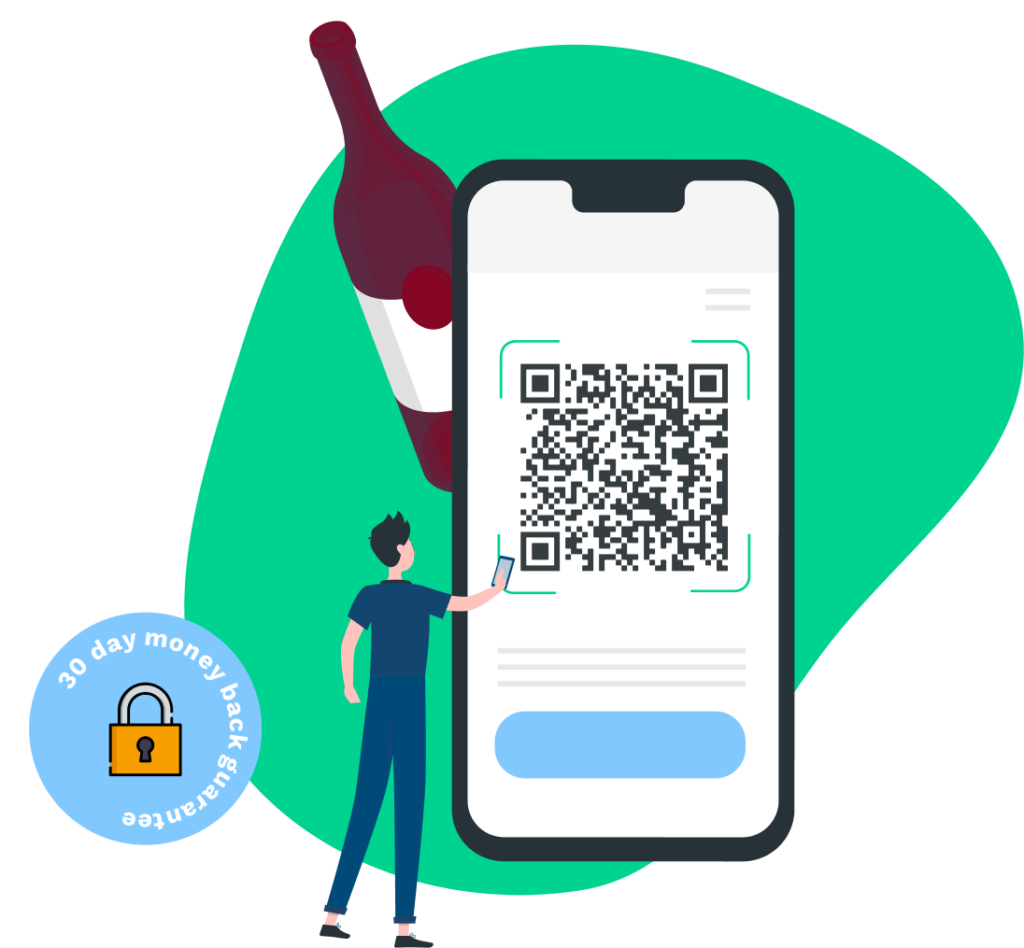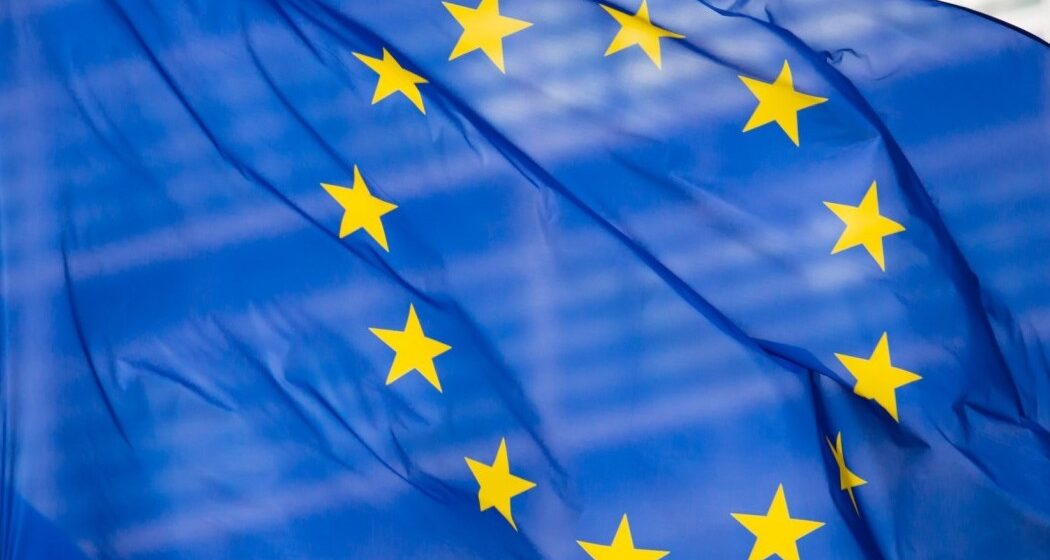Starting December 8, 2023, all wines sold within the European Union (EU) will be required to declare ingredient, allergen, and nutrition information on their labels.
This regulation has caused a stir among winemakers, wine exporters, and wine industry professionals, as they struggle to understand the new EU label regulations, their concerns, and ways to comply with the mandate.
In this article, we will delve further into the key points of new EU label regulations, explore the challenges they pose, and provide digital strategies that wineries can use to ensure compliance with the mandate.
Understanding the key points of new EU wine label regulations
Key points of the new EU rules on the use of e-labels are:
- Physical and digital information inclusion:
-
-
- EU regulations mandate the inclusion of energy value and allergenic ingredients on the physical wine label.
- Full nutrition and ingredient details can be provided electronically through QR codes.
-
- Language requirements:
-
-
- Mandatory information must be presented in a language easily understood by consumers in the selling country.
- EU member countries can specify languages for e-label displays.
-
- Restrictions on e-label content:
-
-
- Electronic labels are limited to essential information; no sales or marketing content is allowed.
- E-labels cannot contain any additional data beyond the required details.
-
- Data privacy and GDPR compliance:
-
-
- EU-compliant e-labels are prohibited from collecting or tracking any user data, ensuring GDPR compliance.
-
- Non-compliance consequences:
-
-
- Non-compliant labels face product removal in the EU and potential fines, similar to GDPR fines which can reach significant amounts.
-
- Labeling requirements:
-
-
- Allergy-causing ingredients and energy value must be directly printed on the wine bottle label.
- Electronic labels cannot include sales or marketing information and cannot collect consumer data.
-
- Applicability to wine bottles:
-
-
- The regulations apply to all new wine bottles introduced to the EU market, whether produced in the EU or imported from a third country.
- Wines produced and labeled before December 8, 2023, can be marketed in the EU with the original label until stocks are exhausted.
-
- Definition of information format:
-
- The legislation clearly outlines the information required on wine labels and allows certain details to be provided electronically through QR codes on e-labels.
- Allergen and energy value information must be directly printed on the label, while ingredient and nutritional details can be accessed via an independent website linked through a QR code on the e-label. A website containing the required information must be located independently of the wine producer’s sales and marketing presentation.
- The content on wine bottle labels can be limited to energy value using ‘E’ symbol.
The most reliable way to ensure compliance with evolving regulations is by using specialized software solutions, such as Craft Technology e-label solution, that provide “clean” web pages containing only necessary information. Here is our step-by-step guide to QR code e-label upload.
Find the simple way to comply with wine label regulations with our easy-to-follow guide!
Benefits of digital technology in e-label EU regulation compliance

Advancements in digital technology, particularly the use of QR codes, have streamlined the process of complying with label regulations, making it more efficient and accessible for all stakeholders involved in the wine industry.
Let’s explore how digital technology and QR codes make complying with the new EU wine label regulations easier.
- Accurate information: Digital technology ensures that the information presented on wine labels is accurate and up-to-date. With traditional paper labels, errors could occur during printing or due to outdated inventory. E-labels can be easily updated, ensuring that consumers have access to the most recent and precise information about the wine.
- Multilingual support: In the EU, where multiple languages are spoken across member countries, e-labels can provide multilingual support. This ensures that consumers from various linguistic backgrounds can access relevant information about the wine, thereby enhancing their overall experience.
- Enhanced transparency: Through e-labeling, producers can offer consumers deeper insights into the wine-making process. This transparency fosters trust between producers and consumers, as the latter can access detailed information about the production process.
- Anti-counterfeiting measures: Digital technology enables the implementation of anti-counterfeiting measures such as QR codes, RFID tags, and NFC (Near Field Communication) chips. These technologies allow consumers to verify the authenticity of the wine by scanning the label with a smartphone, thereby ensuring they are purchasing a genuine product.
- Waste reduction: E-labels significantly reduce paper waste. Traditional labels generate a considerable amount of paper and adhesive waste, contributing to environmental concerns. E-labels, on the other hand, promote eco-friendly practices by minimizing waste production.
Find the simple way to comply with wine label regulations with our easy-to-follow guide!
Prepare for the EU wine e-label legislation with QR codes
Ensuring compliance with mandatory EU legislation for wine labeling is essential, and it’s crucial to start preparing early. One way to make the transition smoother is by implementing QR codes into e-label solutions. This will help to streamline the process and ensure that all necessary information is included on the label.
There are several good reasons why getting ready for EU e-label legislation now can be very beneficial:
- Anticipation: Getting ready for EU e-label legislation in advance ensures stress-free compliance for everyone, avoiding unexpected situations.
- Safety: Craft Technology e-label solution and QR codes provide a secure, fast, and easy way to comply with the legislation.
- Efficiency: Simplify compliance by using the Craft Technology e-label platform, which meets all requirements and streamlines the process by directly publishing required information on labels.
- Cost-effectiveness: Early preparation can save money by preventing fines for non-compliance, making it a financially prudent decision.
- Independence: Craft Technology e-label solution enables simple compliance, affordable subscription, speed, and efficiency and allows updates at any time, providing independence and flexibility in compliance efforts.
- Accessibility: The Craft Technology e-label solution is available to all wineries, offering an easy-to-use e-label solution backed by Craft Technology software and expertise in the wine industry, ensuring EU compliance for wine producers.
Preparing now is a rational step that guarantees a smooth transition to the new legislation, eliminating the risk of fines and penalties.
Craft Technology: Your one-stop solution for wine label compliance

Here’s a glimpse into the array of features that make Craft Technology your one-stop compliance partner:
- Simple wine label editor: Craft the perfect wine label effortlessly. Our user-friendly editor allows you to input essential details without the need for any design expertise.
- Bulk upload: Manage vast datasets with ease. Our platform supports bulk data uploads through APIs, accepting formats like CSV and Excel. This streamlined process ensures efficiency and minimizes hassles.
- Scan analytics dashboard: Gain profound insights into customer interactions. Our real-time analytics dashboard tracks the number of QR code scans, providing valuable usage patterns to enhance your strategies.
- Dynamic QR codes: Embrace adaptability and agility. Our dynamic QR codes enable content updates without reissuing or reprinting labels, ensuring seamless continuity and substantial cost savings.
- Automatic language translation: Overcome language barriers effortlessly. Present content in English, and our system automatically translates it into 24 EU languages. Customers receive information in their native tongue, fostering global engagement. Prime support includes languages like English, Spanish, Portuguese, French, Italian, and German.
- E-labels available in various formats: Experience unparalleled versatility. After crafting your e-label, download QR codes in multiple formats such as jpg, png, tiff, svg, eps, and pdf. These options cater to diverse needs, ensuring your message is delivered effectively.
- Data export: We prioritize your business freedom. Transitioning to a different service? No worries. Our platform allows you to export your content without restrictions, ensuring smooth transitions and fostering unhindered growth.
At Craft Technology, innovation is our ethos. We are dedicated to enhancing your experience continually, promising to expand our feature list to provide you with nothing but the best.
Find the simple way to comply with wine label regulations with our easy-to-follow guide!
For more information:

